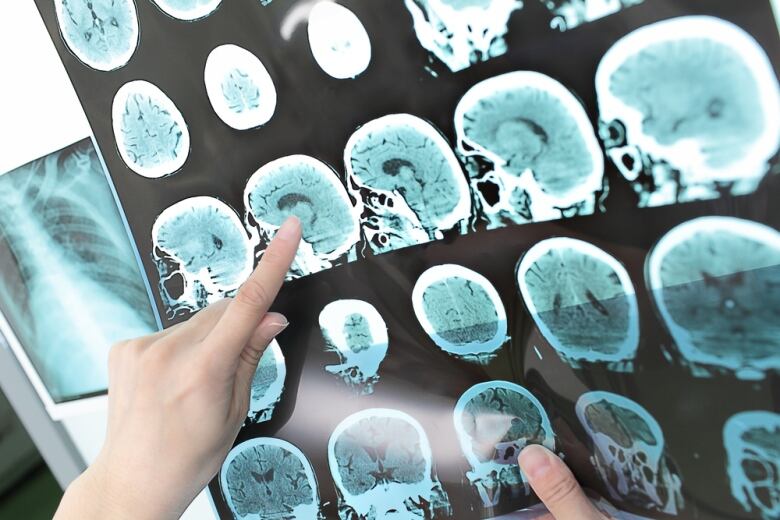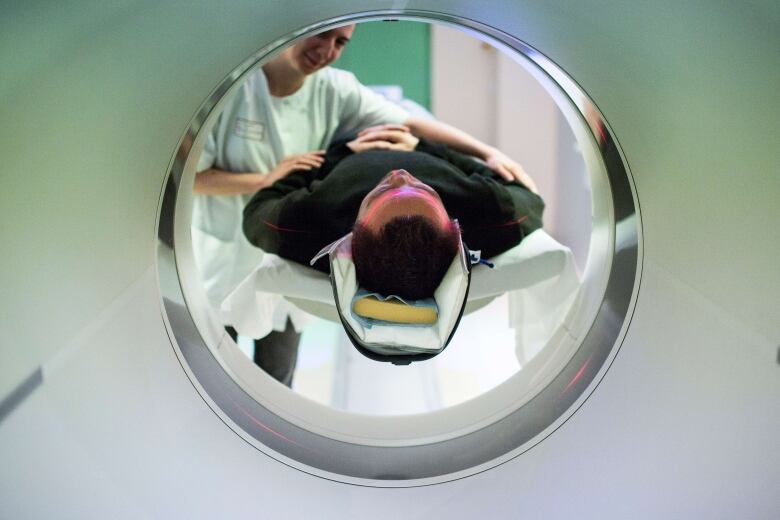Beyond the scalpel: Why 'virtual' autopsies may be the way of the future
Study suggests autopsies using MRI, CT scans perform just as well as a traditional post-mortem exam

It's a familiar scene, whether on television or in the laboratory: A body is cut open, prodded and poked to reveal how someone died, often unexpectedly.
Autopsies offer valuable information about how injury or disease affected a body, how that disease spread inside the body, and which treatments were (or weren't) working.
But the number of autopsies being done in Canada and around the world has been dropping steadily for decades, due to tightening budgets, as well as reluctance from loved ones over the intrusiveness of the procedure.
According to Statistics Canada, autopsies were conducted in about 17 per cent of all deaths in 1991, compared to less than six per cent in 2016.
Now a newstudy, published in Radiology, suggests a high-tech, less-invasive version of an autopsy, using MRI and CT scans, performs just as well as a conventional post-mortem exam.
The researchershope their findings will eventually help more next of kin to consent to an autopsy, particularly those who may object to the traditional procedure for cultural or religious reasons.
"Next of kin often refuse autopsies because of the damaging of the body by the procedure and that is what started off our research," said Dr. Wolter Oosterhuis, one of the study's authors and a pathology professor at Erasmus University Rotterdam in the Netherlands.
92% match
To conduct the study, Oosterhuis and his colleagues compared the performance of "minimally invasive" autopsies done through a combination of MRI scans, CT scans and CT-guided biopsies to conventional autopsies in 99 deceased humans.
They found that the two procedures reached consensus on the cause of death in 92 per cent of cases.
In some cases, the minimally invasive exams performed "slightly better" than the traditional autopsy, by identifying additional disease information that might not have been spotted by the naked eye, Oosterhuissaid.
One case involved a patient who died of an unknown cause, said Dr. Annick Weustink, a radiologist and another of the study's authors. The minimally invasive procedure revealedthe cause of death was a large air embolism, which wasn't detected in the conventional autopsy.
"So I think this really nicely illustrates the strength of post-mortem imaging," she said.

Another benefit to minimally invasive autopsies, Oosterhuissaid,isthey provide a lasting electronic record that can be accessed over generations and independently analyzed by multiple doctorsrather than just the doctor who performed the autopsy, providing an important source for future research.
"A conventional autopsy you can do only once. [If there are] mistakes or things are overlooked, you cannot analyze again," he said.
Benefits for the living
Dr. Jagdish Butany, a pathologist at Toronto General Hospital, said he welcomes a move toward minimally invasive autopsies and the "learning experience"they'd be able to provide when a conventional autopsy isn't needed.
Butany has been performing traditional autopsies for more than 30 years, and said he's seen theirfrequency drop from about 800 examsat his hospital annually when he first startedto about 150 per year now.
Conventional autopsies are partly done for "quality assurance" to make sure the medical treatment provided was appropriate and no medical errors were made, he said. But virtually examining the dead mayoffer additional benefits for the living.
No matter what the cause of death, post-mortem imaging can reveal genetic diseases, for example, that may be passed on to the deceased's next of kin.

The field of medicine has also changed, Butany said, and some of theimaging could provide insights into treatments like transplants and prosthetic devices.
"We need to know what is happening to the organs once they are put in. What is happening to the devices once they were put in," he said."Did they malfunction?"
But there are drawbacks to minimally invasive autopsies. MRI and CT scans are costly, and performing more of these post-mortem tests would tie up these in-demand machines, as well as the specialists who run them.
Ultimately, Butany said, "taking care of the living has precedence over taking care of the deceased."
And while virtual autopsies might point a pathologist toward what area of the body pathologists should focus on, Butany said he believes the "holistic nature" and level of detail you get through a traditional autopsy would ultimately provide more information.
Still, with more research, Butany said he expectsmany hospitals will eventually be performing combination exams, using both techniques, when an autopsy is needed.
"A virtual autopsy, plus the regular, gives you a much more complete answer," Butanysaid. "I think the virtual autopsy has a role to play going forward but so does the regular autopsy."
With files from Christine Birak












_(720p).jpg)


 OFFICIAL HD MUSIC VIDEO.jpg)
.jpg)



























































































